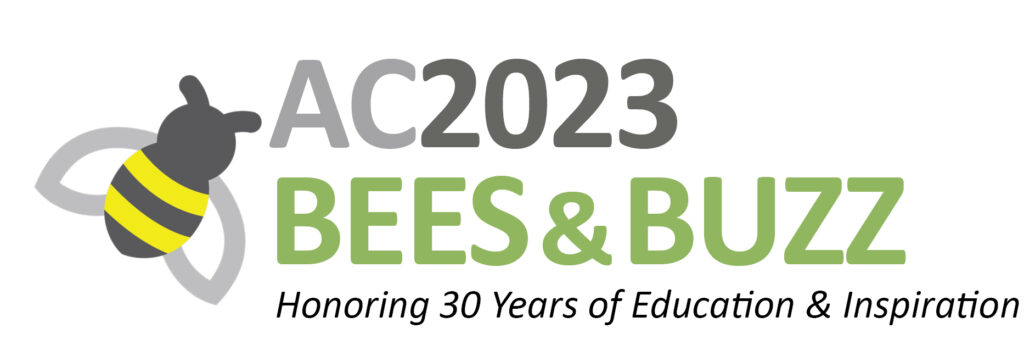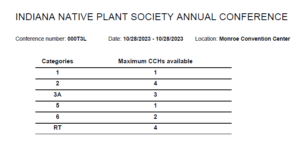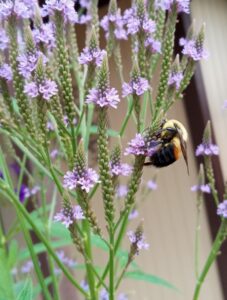Indiana Native Plant Society Annual Conference
October 28, 2023
8:30 a.m. to 4:30 p.m. (Registration opens 7:30 a.m.)
Monroe Convention Center
Bloomington, Indiana
Register for Virtual Attendance at the Conference
Return to Main Conference Page
Friday Night Mixers
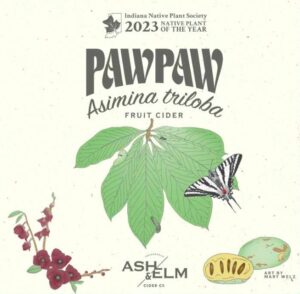 Looking for something to do Friday night before the conference?
Looking for something to do Friday night before the conference?
Two simultaneous get-togethers are planned for INPS members and conference attendees.
Get ready! That night, Ash & Elm Cider Co. will release a new cider in honor of our 2023 Indiana Native Plant of the Year, pawpaw! INPS will have welcome tables at both sites in the evening and you’ll be able to try and buy this special pawpaw cider!
In Bloomington, check out Friendly Beasts Cider Co. (https://friendlybeastscider.com/).
In Indianapolis, stop by Ash & Elm Cider Co. (https://ashandelmcider.com/)
Conference Schedule
Morning
7:30 am – Registration and breakfast
8:40 am – Welcome by President and Conference Chair
8:45 am – Heather Holm
9:45 am – Rich Hull
10:30 am – Break
10:55 am – Kevin Tungesvick & Hilary Cox
11:40 am – Lunch
Afternoon
12:50 pm – INPS Annual Meeting
1:15 pm – Video Celebrating Our 30th Year
1:30 pm – Beronda Montgomery
2:30 pm – Break
2:55 pm – Andrea Huntington
3:40 pm – Dawn Slack
4:10 pm – Final remarks and close
4:30 pm – Bookstore closes
Credit for Attending the Conference!
Pesticide Applicators: You can get Continuing Certification Hours for attending the conference in these categories.
Landscape Architects: Continuing Education Credits are available for attending the conference.
Featured Speakers
Beronda Montgomery (keynote)
Lessons from Plants: Insights for Human Thriving
 Though plants lack eyes and ears and the capacity for fight-or-flight, they can distinguish kin, friend, and foe and can respond to ecological competition with transformative behaviors and adaptations that maximize their chances of survival in dynamic and sometimes unfriendly environments. Our guide to these mysteries is Beronda L. Montgomery, PhD, a writer, science communicator, and professor whose lab-based research focuses on how photosynthetic organisms adapt to changes in their external environment. She suggests that reflecting on these plant responses offers impactful instructions for our own human communities.
Though plants lack eyes and ears and the capacity for fight-or-flight, they can distinguish kin, friend, and foe and can respond to ecological competition with transformative behaviors and adaptations that maximize their chances of survival in dynamic and sometimes unfriendly environments. Our guide to these mysteries is Beronda L. Montgomery, PhD, a writer, science communicator, and professor whose lab-based research focuses on how photosynthetic organisms adapt to changes in their external environment. She suggests that reflecting on these plant responses offers impactful instructions for our own human communities.
Beronda’s scholarship extends beyond biology and into studying mentorship and faculty development to develop evidence-based strategies to foster equity and inclusion in academia. In 2020, Montgomery was one of the co-founders and co-organizers of the first Black Botanists Week. She is a fellow of the American Academy of Microbiology, American Society of Plant Biologists, American Society for Biochemistry and Molecular Biology, and American Association for the Advancement of Science. Beronda was also named one of Cell’s 100 Inspiring Black Scientists in America.
Heather Holm (keynote)
Creating and Managing Landscapes for Native Bees
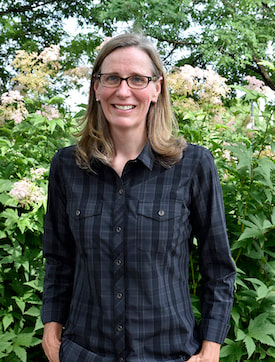 Creating and managing thriving habitats for native bees requires an understanding of such factors as seasonal phenology, nesting strategies, and flower preferences. With approximately 3,600 bee species in North America (north of Mexico), that makes countless unique aspects to keep in mind! Heather Holm teaches us how to think like a bee as she explores the nesting habitats, life cycles, pollen collection, brood rearing, and characteristics of common native bees and how their physical characteristics can influence their effectiveness as pollinators.
Creating and managing thriving habitats for native bees requires an understanding of such factors as seasonal phenology, nesting strategies, and flower preferences. With approximately 3,600 bee species in North America (north of Mexico), that makes countless unique aspects to keep in mind! Heather Holm teaches us how to think like a bee as she explores the nesting habitats, life cycles, pollen collection, brood rearing, and characteristics of common native bees and how their physical characteristics can influence their effectiveness as pollinators.
A biologist and pollinator conservationist, Heather passionately informs and educates audiences nationwide about the fascinating world of native pollinators and beneficial insects, and the native plant communities that support them. She has authored four books: Pollinators of Native Plants (2014), Bees (2017), Wasps (2021), and Common Native Bees of the Eastern United States (2022). Both Bees and Wasps have won multiple book awards including the American Horticultural Society Book Award (2018 and 2022 respectively). Her work has been featured in the New York Times, Minneapolis Star Tribune, and many local publications. Heather is a National Honorary Director of Wild Ones and serves on several nonprofit boards. In her spare time, she is an active community supporter, writing grants, and coordinating and participating in volunteer ecological landscape restoration projects. The latest project is a 13-acre oak savanna restoration that will provide thriving habitat for pollinators, birds, mammals, and passive, nature-based opportunities for people.
Rich Hull
Following in Deam’s Footprints: Identifying Changes in the Wabash River Corridor’s Vascular Plant Flora
 Rich Hull explores how historical plant data and contemporary inventories from 46 sites along the lower Wabash River corridor are being used to assess the impacts of environmental change on natural plant communities in our region. He will address: 1) Why the lower Wabash River corridor is an ideal system for evaluating the impacts of anthropogenic climate change, land use change, and introduced species on Indiana’s native flora; 2) How contemporary plant distribution information can be used in conjunction with historical data to perform a comparative analysis between the current and historical floras; and 3) How the research results will guide conservation efforts within the study area.
Rich Hull explores how historical plant data and contemporary inventories from 46 sites along the lower Wabash River corridor are being used to assess the impacts of environmental change on natural plant communities in our region. He will address: 1) Why the lower Wabash River corridor is an ideal system for evaluating the impacts of anthropogenic climate change, land use change, and introduced species on Indiana’s native flora; 2) How contemporary plant distribution information can be used in conjunction with historical data to perform a comparative analysis between the current and historical floras; and 3) How the research results will guide conservation efforts within the study area.
Rich is a fourth-year PhD student in the Knox Lab at Indiana University Bloomington. He received his B.S. degree in Ecology from the University of Georgia and is currently interested in documenting how anthropogenic forces are impacting native floras in order to identify potential conservation solutions and predict future floristic changes.
Panel Discussion with Kevin Tungesvick & Hilary Cox
Nativars: Beneficial or Harmful? It’s Complicated…
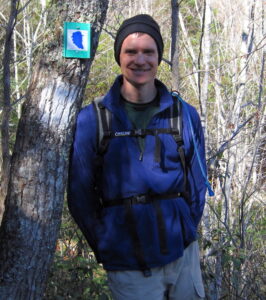 Nativars are selections of native species with desirable traits such as reduced stature, showier or different colored flowers, or improved foliage. They are usually clones and therefore lack the genetic diversity of wild populations. Nativars may persuade people to include or convert to native species in their gardens, and they often but not always have similar ecological values. However, they may also cross pollinate with local wild populations to alter their genetics or naturalize where they are not locally native. We will discuss the potential benefits and problems with nativars through an interactive panel discussion led by author and horticulturalist Hilary Cox and ecologist Kevin Tungesvick.
Nativars are selections of native species with desirable traits such as reduced stature, showier or different colored flowers, or improved foliage. They are usually clones and therefore lack the genetic diversity of wild populations. Nativars may persuade people to include or convert to native species in their gardens, and they often but not always have similar ecological values. However, they may also cross pollinate with local wild populations to alter their genetics or naturalize where they are not locally native. We will discuss the potential benefits and problems with nativars through an interactive panel discussion led by author and horticulturalist Hilary Cox and ecologist Kevin Tungesvick.
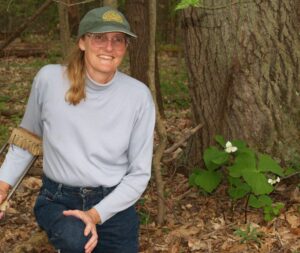 Kevin has had a lifelong interest in nature. He earned a degree in Atmospheric Science from Purdue University in 1990. He was employed as a meteorologist with the National Weather Service in the Cincinnati Ohio area from 1991 until 1994. His experience with the nursery business where he was employed during college led him back to plant propagation where he initiated native plant and seed production at Spence Restoration Nursery in 1995 and continued to manage it through 2017. In 2018 he accepted his current position as Senior Ecologist at Eco Logic LLC headquartered in Bloomington Indiana where he performs invasive and rare plant surveys, GIS invasive plant mapping, and floral inventories. He also designs and consults on installation of native plant communities in restorations and landscaping.
Kevin has had a lifelong interest in nature. He earned a degree in Atmospheric Science from Purdue University in 1990. He was employed as a meteorologist with the National Weather Service in the Cincinnati Ohio area from 1991 until 1994. His experience with the nursery business where he was employed during college led him back to plant propagation where he initiated native plant and seed production at Spence Restoration Nursery in 1995 and continued to manage it through 2017. In 2018 he accepted his current position as Senior Ecologist at Eco Logic LLC headquartered in Bloomington Indiana where he performs invasive and rare plant surveys, GIS invasive plant mapping, and floral inventories. He also designs and consults on installation of native plant communities in restorations and landscaping.
Hilary Cox is a horticulturist, garden designer, botanist, and photographer. She was the owner and landscape designer of Leescapes Garden Design for over twenty years and has previously held positions as a designated collector of prairie and woodland seeds for the joint projects of the Millennium Seedbank, Royal Botanic Gardens, Kew, and Seeds of Success USA, which was coordinated by the Chicago Botanic Garden.
Andrea Huntington
Indiana Land Trusts: Collaborating to Create Conservation Corridors and Connectivity
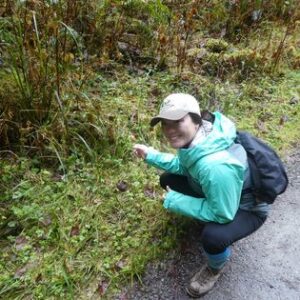 In 1937, Indiana’s General Assembly passed a resolution adopting Crossroads of America as the State’s official motto. However, this colloquial moniker does not reflect the scope of intersections that make Indiana unique. Here we find an epicenter where richly biodiverse natural lands, farms, industry, communities, and vast transportation corridors unite. How is nature and Indiana’s natural heritage preserved despite significant fragmentation? Andrea Huntington will show how the Indiana land trust movement, which dates back to 1960, bolsters state and local initiatives to protect Indiana’s landscape and its most important habitats and ecosystems.
In 1937, Indiana’s General Assembly passed a resolution adopting Crossroads of America as the State’s official motto. However, this colloquial moniker does not reflect the scope of intersections that make Indiana unique. Here we find an epicenter where richly biodiverse natural lands, farms, industry, communities, and vast transportation corridors unite. How is nature and Indiana’s natural heritage preserved despite significant fragmentation? Andrea Huntington will show how the Indiana land trust movement, which dates back to 1960, bolsters state and local initiatives to protect Indiana’s landscape and its most important habitats and ecosystems.
Andrea is the executive director of Indiana Land Protection Alliance (ILPA). She has a deep appreciation for Indiana’s rich and diverse landscapes and admires the work being accomplished by Indiana land trusts and partners. Andrea graduated from Temple University and Chicago-Kent College of Law. She has been active with the land trust community since 2017. In her past conservation work, she generated awareness and support for habitats and ecosystems along the southern Lake Michigan Watershed.
Dawn Slack
Hoosiers Investing In Nature
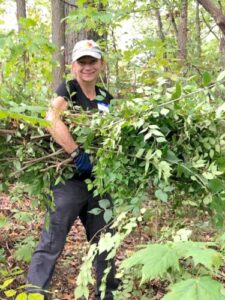 Hoosiers all over the state are celebrating our natural Indiana. And as more of us muster our friends, family and local resources we are beginning to understand that removing invasive plant species aid the healing process that our lands need to support native plants and ecosystems that we cherish. Dawn Slack will share some of the inspiring and heartfelt work being done around the state by Hoosier volunteers that are collaborating with experts. She will also share invasive species legislative updates and how each one of us can get involved. Have your boots, gloves and loopers handy because you’ll want to join these folks immediately!
Hoosiers all over the state are celebrating our natural Indiana. And as more of us muster our friends, family and local resources we are beginning to understand that removing invasive plant species aid the healing process that our lands need to support native plants and ecosystems that we cherish. Dawn Slack will share some of the inspiring and heartfelt work being done around the state by Hoosier volunteers that are collaborating with experts. She will also share invasive species legislative updates and how each one of us can get involved. Have your boots, gloves and loopers handy because you’ll want to join these folks immediately!
Dawn has been studying natural resources for over 30 years. She has worked for our military and state governments, as well as for-profit and not for profit entities. Her work and military lifestyle has led her coast to coast in the U.S. and to Europe where she has been privileged to study and manage our natural resources alongside many across the U.S. She currently resides in Nashville, Indiana where she works to share biological science research, inspire others to tackle invasive species issues and build collaboration for healthy lands, water, wildlife and people.
Register for Virtual Attendance at the Conference
